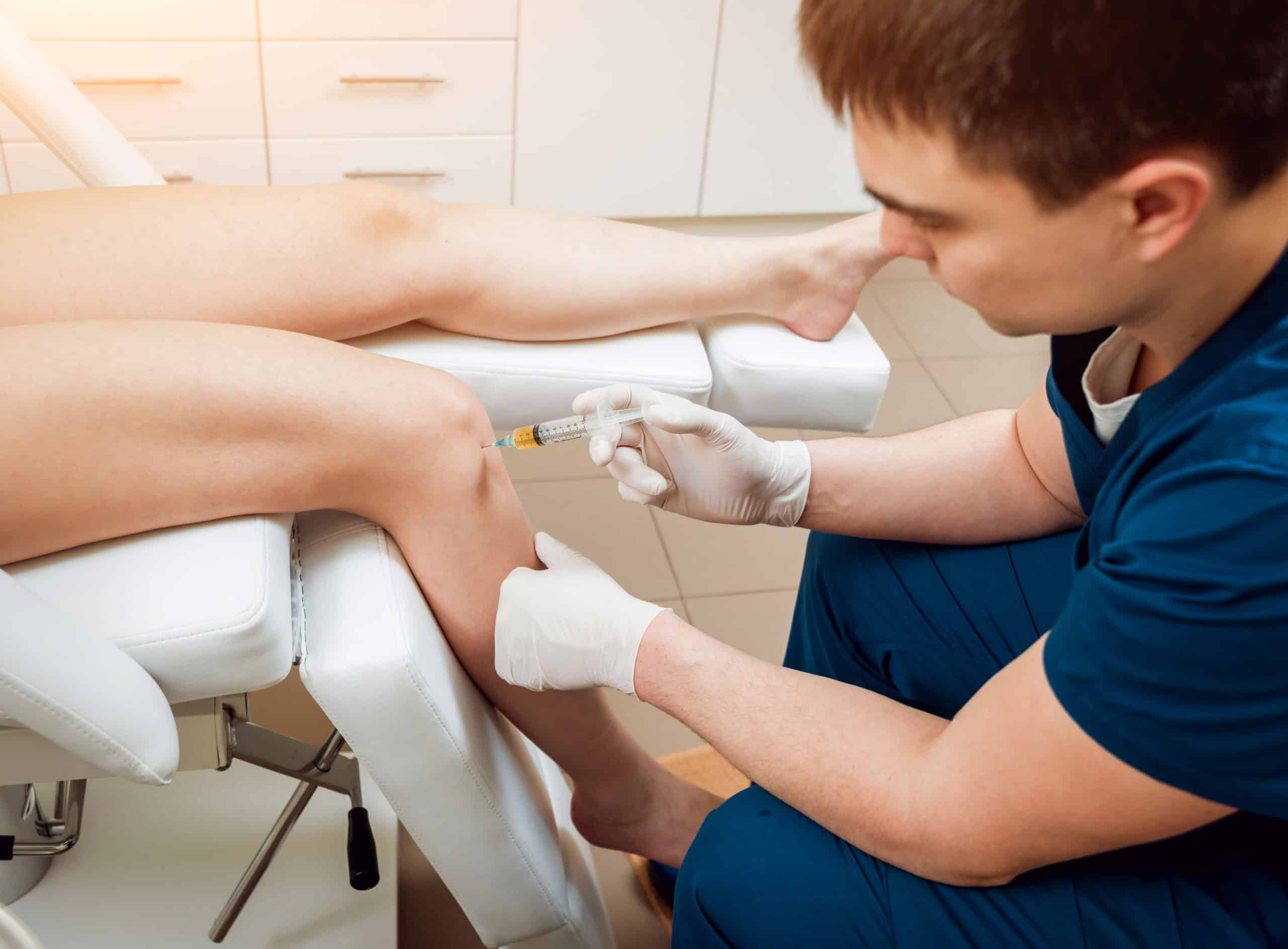Platelet-Rich Plasma Therapy
PRP injections create new structures and rebuild weakened systems through use of the patient’s own blood, which reduces the risk of an infection or allergic reaction. You might be a good candidate for these injections if you have tendinitis, lower back pain, sports injuries, and other ailments. The effectiveness varies by patient but some athletes resume their usual activities after only a few weeks.


After you have a consultation with a pain management specialist at Northeast Spine and Sports Medicine, they will review treatment options. If you and our knowledgeable team decide platelet-rich plasma injections are right for you, you’ll schedule another appointment for the procedure. The outpatient procedure takes anywhere between 45 and 90 minutes.
Platelet-rich plasma therapy, or PRP therapy, is a type of regenerative medicine that speeds up the healing process of tendon injuries and osteoarthritis naturally without subjecting the patient to risk or surgery. Plasma, the liquid portion of whole blood, is composed largely of water and proteins and provides a medium for blood cells and platelets to circulate through the body. Platelets are the blood cells responsible for clotting and other functions related to your body’s healing process. If you have a low platelet count, you are at risk for excessive bleeding and other complications. Through PRP injection therapy, our doctors at Northeast Spine and Sports Medicine help increase your platelet count to help you recover from injuries or other hard-to-treat ailments quickly.
Are you a good candidate for Platelet-Rich Plasma Therapy?
-
Positive
You have suffered some kind of tendon injury, either a sports injury or due to an accident or a fall.
-
Positive
You are recovering from surgery, especially jaw or plastic surgeries, or you suffer from osteoarthritis.
-
Negative
You have a low platelet count or are on a blood thinner, either of which puts you at risk for excessive bleeding.
-
Negative
You are suffering from an ongoing infection.
Frequently asked questions
Do Platelet-Rich Plasma Injections Cause Pain?
PRP injections can cause somewhat more discomfort than other injections, as they are commonly injected into muscles or tendons rather than joints. There can also be some swelling in the injection area. However, the pain typically subsides in no more than 2-3 days.

How Long Does Receiving Platelet-Rich Plasma Treatment Take?
The total procedure time tends to be around an hour. There are a few steps to the procedure:
- First, your provider needs to draw blood and process the platelets. This can take up to 30 minutes.
- Next, the nerve block needs time to take effect. Typically, this is around 15 minutes.
- Once these steps are complete, the procedure itself can take 10-30 minutes to complete.
Depending on your reason for undergoing platelet-rich plasma therapy, the number of sessions you’ll need may vary. For patients treating acute muscle or tendon injuries, only one or two sessions may be necessary. Those treating a more chronic condition, like arthritis or tendinosis, may need an additional session or two.

What Are the Potential Side Effects of Platelet-Rich Plasma Therapy?
The most common side effect of PRP injections is pain at the injection site. As an injection-based treatment method, PRP also carries the usual risk of allergic reaction, infection, nerve injury, or tissue damage. All of these risks are typical of any injection and none are considered serious.

What Is PRP Used for?
PRP is typically used to treat pain and aid recovery in patients suffering from tendon injuries or plastic surgery. It can also be used to treat pain resulting from other conditions, including osteoarthritis.

